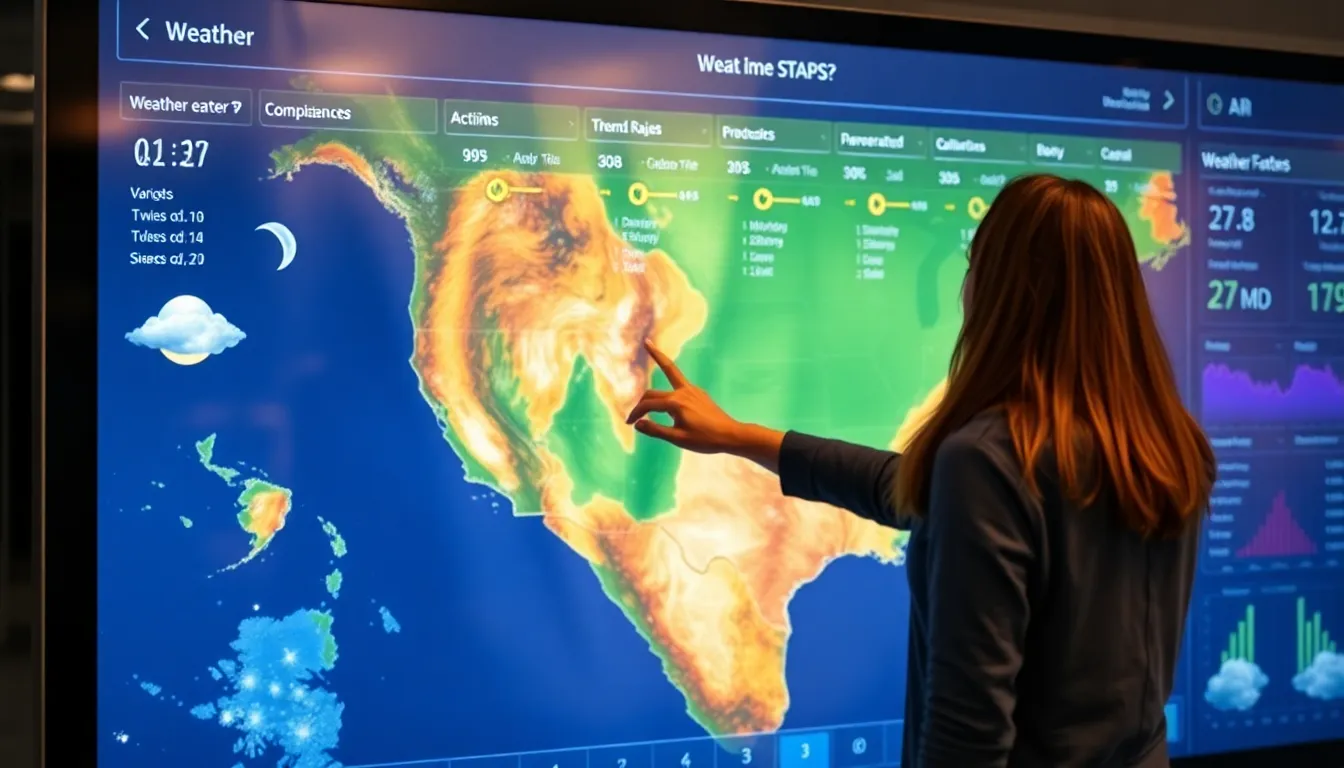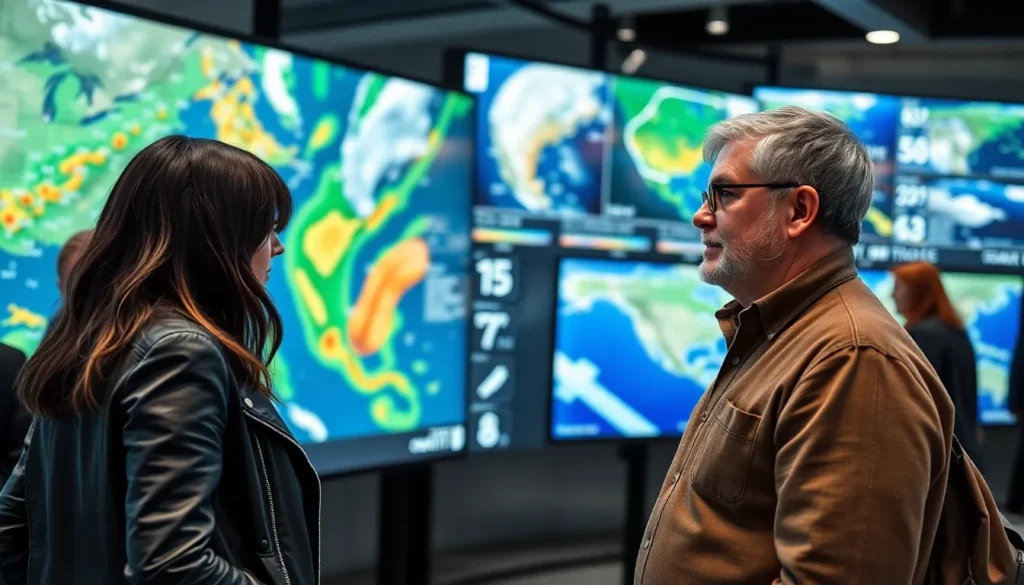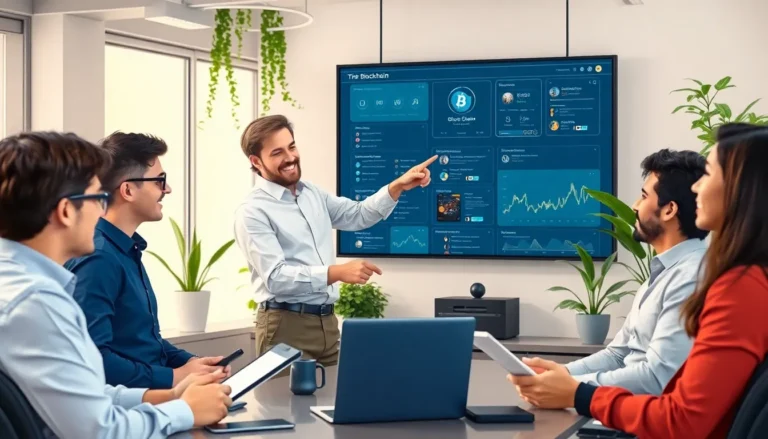Imagine a world where weather forecasts don’t just tell you if it’s going to rain, but actually transport you right into the storm. Welcome to the age of immersive forecasting. This innovative approach combines cutting-edge technology with real-time data, creating a vivid experience that’s more than just a five-day outlook. It’s like having a personal meteorologist who moonlights as a virtual reality tour guide.
Table of Contents
ToggleOverview of Immersive Forecast
Immersive forecasting transforms weather prediction by leveraging advanced technology. This method incorporates real-time data and interactive elements to enhance user engagement. Users experience weather simulations that mimic actual conditions, creating a more relatable forecast.
Innovative visualizations convey weather patterns clearly, inspiring users to understand changing forecasts. Customizable options allow individuals to tailor their experience based on personal interests or regions. Interactive maps vividly illustrate storm paths and temperature gradients, demonstrating how weather influences daily life.
Immersive forecast systems employ augmented reality features to bring data to life. By using virtual reality headsets, users can step into specific weather situations. Specialized apps provide curated insights from professional meteorologists, offering expert analysis in an accessible format.
Additionally, this approach can inform decision-making. Farmers can monitor conditions affecting crop yields through immersive simulations. Local governments may assess severe weather threats, enabling effective emergency responses.
Mobile technology has revolutionized access to immersive forecast data. Users can receive personalized updates based on their geographical location. Continuous advancements in machine learning further refine predictive models, enhancing accuracy.
As immersive forecasting evolves, it holds potential for widespread applications in various fields. Industries such as tourism and event planning benefit greatly from accurate weather insights. Overall, immersive forecasts represent a significant shift in how people interact with weather information.
Key Features of Immersive Forecast

Immersive forecasts provide several essential features that enhance the user experience and improve understanding of weather conditions.
Interactive Data Visualization
Interactive data visualization is a core aspect of immersive forecasting. Users engage with dynamic visual elements that depict weather patterns in a clear and compelling manner. Maps and graphs illustrate real-time changes, allowing individuals to see temperature shifts and storm paths with ease. Customization options empower users to filter data based on their preferences or locations. This feature transforms complex data into understandable graphics, promoting better decision-making. Enhanced storytelling through visualizations helps users connect emotionally with the weather, making forecasts more relatable and impactful.
Real-Time Updates
Real-time updates play a crucial role in immersive forecasting. Instant notifications provide users with timely information about changing weather conditions. Mobile technology facilitates the seamless delivery of updates, ensuring individuals stay informed regardless of their whereabouts. Specialized apps offer users tailored alerts based on personal locations, improving relevance. Quick access to critical data enhances safety, particularly during severe weather events. By integrating real-time updates, immersive forecasting fosters informed choices that can significantly influence activities like travel, agriculture, and outdoor events.
Benefits of Using Immersive Forecast
Immersive forecasting offers significant advantages that enhance user experience and decision-making capabilities. These benefits impact various sectors, including agriculture, emergency management, and personal planning.
Enhanced Decision-Making
Incorporating immersive forecasts drives informed decisions. Farmers utilize real-time weather data to adjust planting schedules. Local governments can assess incoming storms, facilitating proactive emergency responses. Businesses also improve planning through accurate weather insights, minimizing disruptions. Additionally, individuals plan daily activities, like outdoor events and travel, based on clear, predictive data. The enhanced clarity of visualizations supports effective communication among stakeholders, ensuring everyone understands potential risks and opportunities related to weather changes.
Improved User Engagement
Users experience a higher level of engagement with immersive forecasting technologies. Interactive maps capture attention while portraying storm paths and temperature variations. Dynamic visualizations transform raw data into compelling graphics, simplifying complex information. Personalized notifications keep users updated about weather changes that matter to them, ensuring relevance. Customizable features allow individuals to tailor their experiences to specific interests, enhancing satisfaction. As users explore these immersive elements, they develop a deeper understanding of weather patterns and their implications, making the forecasting experience more impactful and enjoyable.
Challenges and Limitations
Immersive forecasting faces several challenges and limitations that affect its effectiveness and reach.
Technical Limitations
Technical barriers hinder the full integration of immersive forecasting. Real-time data processing requires substantial computational power and advanced algorithms. High-quality visuals demand significant bandwidth, which may not be available in all regions. Users in remote areas might experience delays or disruptions in service due to these constraints. Additionally, the reliance on accurate geographical data presents challenges, particularly in regions with less precise mapping resources. Data inconsistency can lead to misleading forecasts, undermining user trust in the system.
User Accessibility
User accessibility issues limit the widespread adoption of immersive forecasting. Not everyone possesses the necessary devices, such as virtual reality headsets or compatible mobile phones. Cost of these technologies often represents a barrier for some users. Furthermore, digital literacy plays a crucial role; individuals unfamiliar with new technologies may struggle to navigate immersive interfaces. Language options also affect engagement, as many users may not find forecasts available in their preferred language. Overall, these factors can hinder user experience, reducing the effectiveness of the immersive forecast approach.
Immersive forecasting is shaping the future of weather prediction by making it more engaging and accessible. With its innovative use of technology and real-time data, users can now experience weather conditions in a way that’s both informative and relatable. This approach empowers individuals and industries alike to make better decisions based on accurate forecasts.
Despite its challenges, including technical barriers and accessibility issues, the potential benefits of immersive forecasting are vast. As technology continues to advance, it’s likely that this method will become increasingly integrated into daily life. The evolution of immersive forecasting promises to transform how people interact with weather data, ultimately enhancing understanding and preparedness for various weather conditions.









